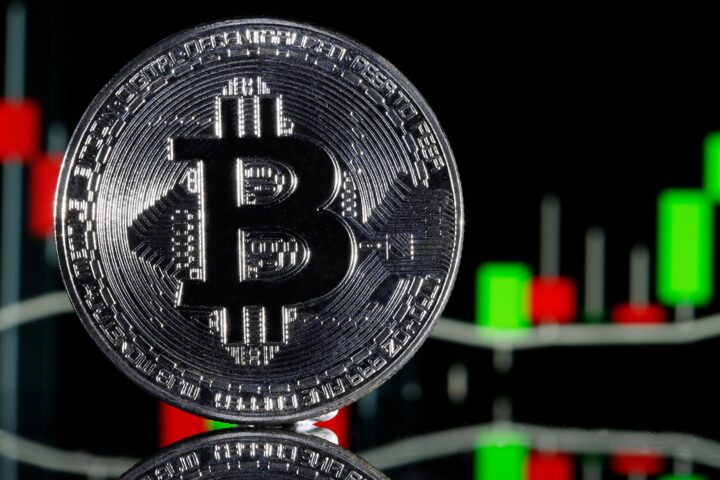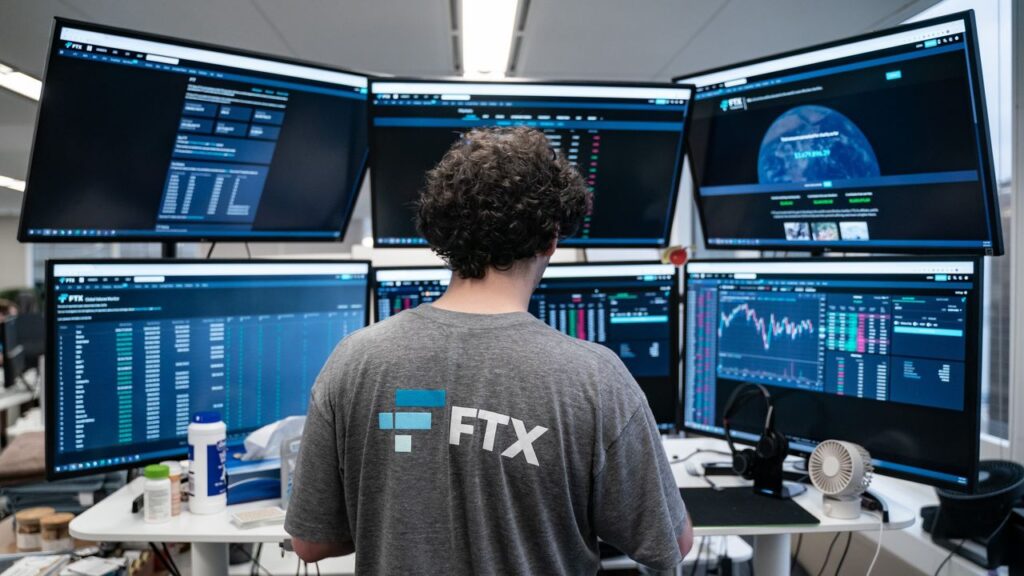The perpetrator of the assault on the decentralised exchange (DEX) KyberSwap has been observed shifting millions in digital assets from one blockchain to another.
On the 26th of February, the blockchain analytics firm PeckShield disclosed movements from the wallet address of the KyberSwap attacker.
According to blockchain data, the hacker transferred 798.8 Ether (ETH), valued at nearly £2.5 million, from Arbitrum to the Ethereum network.
In addition to the £2.5 million, the hacker also relocated almost one million dollars in stablecoins. A wallet associated with the exploiter sent £826,500 of the Dai (DAI) stablecoin to another wallet.
The KyberSwap breach stood out as one of the major breaches of 2023. On the 23rd of November, the DEX notified its community that it had encountered a “security incident” and advised its users to withdraw their funds.
It was initially revealed that around £46 million in digital assets were siphoned off during the breach. However, it later emerged that the total amount lost nearly reached £49 million.
On that day, the hacker also left a message on-chain for the KyberSwap team, stating that negotiations would commence when he was “fully rested.”
In response, the KyberSwap team proposed a bounty of £4.6 million in return for the return of 90% of the pilfered funds.
READ MORE: US Attorney Requests Tighter Travel Restrictions for Former Binance CEO CZ
However, the bounty negotiations took a sour turn when the hacker began to express discontent with KyberSwap’s approach.
On the 29th of November, the hacker posted a message on-chain threatening to prolong negotiations further if the KyberSwap team persisted with their threats of legal action and what the hacker described as unfriendliness.
Subsequently, the hacker made an unexpected demand, seeking total control over the KyberSwap company and all of its assets.
The hacker also insisted on temporary full authority and ownership over KyberDAO, which serves as the governance mechanism for Kyber, along with all documents related to Kyber.
The company was given until the 10th of December, 2023, to decide before the “treaty falls through.”
In response to the hacker’s demands, the KyberSwap team opted to initiate treasury grants for the victims of the breach.
On the 2nd of December, 2023, the team announced it would provide a grant to those who lost funds in the breach and have not been compensated.
The breach also had a profound impact on the company, leading to a 50% reduction in its workforce a month after the incident.
Overdare, a venture centred on the Metaverse, has unveiled a collaboration with Circle, the issuer of USD Coin, aimed at incorporating in-game Web3 wallets and USDC payments for its gaming content creators.
Circle declared on February 26th a strategic alliance with Overdare, designed to facilitate crypto payments for creators of gaming content.
As per the proclamation, Overdare will integrate the stablecoin issuer’s Programmable Wallets service to enable in-game wallets and USD Coin payments for gaming content remunerations.
This facilitates content creators in receiving stablecoins in return for their gaming creations.
Overdare stands as a nonfungible token (NFT)-centric metaverse game, a joint effort between the software entity Naver Z and video game publisher Krafton, renowned for its involvement in launching the widely popular battle royale game PUBG: Battlegrounds.
The venture was unveiled on September 15, 2023, as a Roblox-esque mobile game constructed utilising the Unreal Engine 5.
In addition to the wallet integration, Circle emphasised that the metaverse game will incorporate the USDC stablecoin as an alternative method for creators to settle transactions and accrue revenue.
The metaverse enterprise views this as an opportunity to aid gaming creators in transitioning from Web2 platforms to the Web3 realm.
READ MORE: Reddit and Google Forge AI Partnership to Boost Model Training
Henry Park, CEO of Overdare, conveyed the team’s enthusiasm for the collaboration with Circle.
The executive lauded the stablecoin issuer’s adherence to regulatory standards and remarked that the partnership would “assure creators dependable access to their earnings.”
Jeremy Allaire, co-founder and CEO of Circle, expressed his conviction that the partnership could contribute to shaping the “future of digital entertainment” and foster a Web3 ecosystem for all.
Allaire also underscored their eagerness to furnish Web3 wallets and USDC payout support to Overdare in supporting the creator economy.
The latest development within Overdare arises amidst a surge in interest in blockchain gaming tokens.
On February 22nd, the crypto token of Web3 game Pixel approached a valuation of $2.7 billion subsequent to its listing on the crypto exchange Binance.
By then, the PIXEL token had surged to a peak of $0.53, marking a more than tenfold increase from its listing price of $0.04.
Grayscale’s spot Bitcoin exchange-traded fund (ETF) has encountered its third consecutive trading day of dwindling net outflows, plummeting to a record low of £22.4 million as ETFs collectively achieved a two-week net inflow peak.
Farside Investor data for 26th February reveals that the Grayscale Bitcoin Trust (GBTC) experienced three successive days of diminishing net outflows on 22nd, 23rd, and 26th February.
The trading week culminated on Friday with a daily net outflow of £44.2 million, which further halved on 26th February.
Daily net GBTC outflows reached their zenith on 22nd January, amounting to £640.5 million.
Nevertheless, Grayscale has endured 31 consecutive trading days of outflows since its transition to an ETF on 11th January, with a total of £7.47 billion drained from the ETF.
CEO of Bitcoin technology firm Blockstream, Adam Back, shared on X on 26th February that he is “waiting for the day GBTC flashes an inflow.”
Back suggested that while it “could happen,” it would necessitate “just enough premium” to motivate traders to arbitrage the ETF.
Henrik Andersson, Chief Investment Officer at asset manager Apollo Crypto, concurred in a separate X post, asserting that when Grayscale’s fund records a net inflow for the first time, it “will be a mega signal to the market.”
READ MORE: US Attorney Requests Tighter Travel Restrictions for Former Binance CEO CZ
Meanwhile, Farside’s data for 26th February indicates that the combined net inflows of all Bitcoin ETFs excluding Invesco and Galaxy’s reached £515.5 million — the highest in two weeks.
The ETFs attained a combined net inflow of £631.3 million on 13th February but have struggled to sustain the momentum since, witnessing even a net outflow of £35.6 million on 21st February due to a comparatively larger outflow day from GBTC and smaller inflows to other funds.
Fidelity’s ETF garnered the majority of the inflows on 26th February, exceeding £243 million, constituting nearly half of the day’s net total.
It marks FBTC’s second-highest inflow day ever, following behind 17th January.
The remaining half of the net inflow stemmed from BlackRock’s ETF, along with ARK Invest and 21Shares fund, which received respective inflows of nearly £112 million and over £130.5 million.
Trading volumes for the “new nine” spot Bitcoin exchange-traded funds (ETFs) have hit a fresh daily record as BTC surged to as high as $54,938 on Monday.
On February 26, trading volumes for the nine surpassed $2.4 billion, surpassing the previous record of $2.2 billion set on the inaugural trading day, January 11, according to data disclosed by Bloomberg ETF analyst Eric Balchunas.
The figures for both days excluded volume from Grayscale’s converted Bitcoin ETF product, the Grayscale Bitcoin Trust (GBTC).
BlackRock’s IBIT led the pack on February 26 with £1.29 billion, establishing its own daily record by approximately 30%, while Fidelity’s FBTC trailed at £576 million.
Flows from the ARK 21Shares (ARKB) and Bitwise (BITB) ETFs totalled £276 million and £81 million, respectively.
Balchunas remarked he wasn’t “totally sure” where the new interest stemmed from but highlighted that volumes typically surge on the first day of the trading week.
Fellow Bloomberg ETF analyst James Seyffart observed February 26 marked the second-largest trading day recorded at £3.2 billion when incorporating flows from Grayscale’s Bitcoin ETF.
Earlier in the trading session, when IBIT surpassed the £1-billion milestone, Balchunas pointed out that IBIT had secured the 11th largest volume among all ETFs.
“Insane number for newbie ETF (especially one with ten competitors). £1b/day is big boy level volume, enough for (even big) institutional consideration.”
READ MORE: China’s Supreme Prosecutorial Authority Targets Cybercrime Surge Using Blockchain Projects
Meanwhile, Bitcoin’s price surged to £54,938 on February 26 — reaching a two-year high — although it still falls short of Bitcoin’s all-time peak of £69,044 on November 10, 2021, as per CoinGecko data.
Related: BlackRock’s Bitcoin ETF reaches top 0.2% of all ETFs so far this year
While flow data for February 26 is pending, over £583 million streamed into spot Bitcoin ETFs in the four-day trading week prior, as per BitMEX Research.
A net outflow of £35.7 million was recorded on February 21, marking the first day without inflows since January 25.
Year-to-date inflows have now surpassed £5.5 billion.
IBIT, FBTC, ARKB, and BITB have accumulated the most substantial inflows of £5.9 billion, £4 billion, £1.4 billion, and £1 billion, respectively, while GBTC has witnessed outflows of £7.4 billion.
Decentralised blockchain platform Aleo has reportedly exposed certain users’ information on 25th February, as per reports on X (previously Twitter).
The platform, centred on zero-knowledge (zk) cryptography, utilises a third-party protocol for Know Your Customer (KYC) purposes.
A pseudonymous user, @0xemirsoyturk, disclosed that Aleo erroneously forwarded KYC documents to his email.
These documents contained selfies and ID card photos of another individual, prompting concerns about the safeguarding of his own details.
Another user, @Selim_jpeg, corroborated the assertion, revealing that he also received KYC documents of a different person in his email.
To be eligible for a reward on Aleo, users must fulfil KYC/AML requirements and clear the Office of Foreign Assets Control (OFAC) screening, as stipulated by Aleo’s internal regulations.
This process is mandatory upon registration with HackerOne – a third-party protocol for gathering users’ unencrypted KYC data.
Zero-knowledge layer-1 blockchain platforms concentrate on furnishing heightened privacy and security for users.
They employ zero-knowledge proof cryptographic techniques to enable transactions without disclosing specific details, thereby ensuring confidentiality.
READ MORE: Coinbase Advocates for Ether ETP Approval Amid SEC Scrutiny
This privacy-oriented strategy renders it arduous for external entities to track or access sensitive information, furnishing users with greater control over their data.
These platforms strive to enhance privacy in blockchain transactions, rendering them more secure and confidential for participants.
Mike Sarvodaya, the founder of Galactica, a layer-1 blockchain infrastructure, highlighted that theoretically, such a protocol should never allow access to user data. He remarked:
“It’s ironic that a protocol for programmable privacy uses a third party to collect users’ unencrypted KYC data after that leaks to the public.
Apparently, when your zk stack is so advanced, you might just forget how to practice basic opsec.”
According to Sarvodaya, the Aleo incident ironically underscores the importance of developing storage and proof systems for sensitive data, such as Personally Identifiable Information (PII), based on zero knowledge or fully homomorphic encryption (FHE). In such systems, protocol rules must ensure that no single party can disclose stored data.
Aleo Foundation executive director Alex Pruden mentioned in an interview with The Block that the Aleo mainnet is slated for launch in the coming weeks, once final bugs are addressed, aiming to introduce privacy to crypto transactions.
Bankrupt cryptocurrency exchange FTX has resolved a dispute concerning its European arm, reverting ownership back to its original proprietors.
Reported by Reuters on 24th February, FTX consented to vend FTX Europe back to its founders for $32.7 million, indicating challenges in securing alternative buyers.
The Swiss startup Digital Assets AG, later rebranded as FTX Europe, was procured in a $323 million transaction in 2021.
Before agreeing to the sale, FTX endeavored to recuperate the expenditure incurred in the acquisition.
Alleging that the purchase was bankrolled with client funds and contending that the acquisition price was excessively high, the exchange lodged a lawsuit.
The founders of the startup, Patrick Gruhn and Robin Matzke, refuted the accusations and retaliated by demanding $256.6 million from FTX.
Reuters disclosed that the dispute was ultimately settled on 21st February.
FTX Europe was encompassed in FTX’s Chapter 11 filing in the United States in November 2022.
READ MORE: Bitcoin Struggles Amidst Institutional Investment Slowdown
Following its insolvency, several cryptocurrency exchanges endeavored to procure the European segment, aspiring to seize a portion of FTX’s local market.
For instance, the American cryptocurrency exchange Coinbase made two attempts to acquire FTX Europe: firstly in November 2022, subsequent to its parent company’s dramatic downfall, and then in September 2023.
Interest was also expressed by cryptocurrency firms Trek Labs and Crypto.com.
Operating in the region for merely eight months, FTX Europe launched a website for European clients to initiate withdrawals in March 2023, marking the first such action since declaring bankruptcy.
FTX is nearing the conclusion of its bankruptcy proceedings, intending to fully reimburse billions of dollars to its clients.
As part of its endeavours to recoup funds for creditors, the company was authorised on 22nd February to divest more than $1 billion in shares in the artificial intelligence company Anthropic.
Pseudonymous on-chain researcher ZachXBT has successfully recovered the majority of funds from the sale of a rare DeGods nonfungible token (NFT), which was pilfered in May 2023 following the original NFT holder’s unfortunate entanglement in a phishing scam.
In a post dated Feb. 24, ZachXBT relayed the outcome of his nine-month inquiry into the theft of the DeGods #3251 NFT to his 505,200 followers, revealing that most of the funds have now been restored to the victim.
The NFT was auctioned off in May 2023 for 99 Ether, valued at approximately £127,000 at the time.
“I am pleased to share that I was able to help recover a decent chunk of the stolen funds which have now been returned back to the victim,” said ZachXBT.
ZachXBT received a distress call from the victim in May 2023, shortly after the victim discovered his wallet had been emptied, seeking ZachXBT’s aid in reclaiming his digital artwork.
The duration of ZachXBT’s investigations can vary depending on the intricacies involved.
He frequently employs simple diagrams to elucidate to his followers how the phishing scams unfolded and to trace the movement of funds, even across cryptocurrency mixers.
“While recovery can sometimes be a protracted process, it is indeed achievable, and I am always eager to share such success stories,” he remarked.
ZachXBT also disclosed his intention to wrap up his pro bono blockchain investigation work soon.
READ MORE: Avalanche Blockchain Faces Block Production Disruption: Investigation Underway
He made this revelation following feedback from users expressing frustration because he did not assist them in recuperating their pilfered cryptocurrency, notwithstanding his reiterated assurance that this service is provided free of charge.
“This is precisely why I am ceasing all public interest work shortly,” he asserted.
ZachXBT has been a prominent figure in various sectors of the cryptocurrency industry, aiding in unraveling crypto-related crimes for both individuals and national authorities.
In October 2022, Cointelegraph reported that French authorities were leveraging ZachXBT’s research to apprehend the perpetrators behind the theft of NFTs valued at $2.5 million.
Christophe Durand, deputy chief of France’s national cyber unit, informed the AFP that they became aware of the incident following ZachXBT’s investigation on social media.
Financial services firm the Carlson Group has reportedly incorporated four out of the 10 Bitcoin exchange-traded funds (ETFs) into its offerings for registered investment advisers (RIAs).
The £30 billion investment firm prioritised asset growth, trading volume, and low fees in selecting funds from BlackRock, Fidelity, Bitwise, and Franklin Templeton, as reported by Bloomberg on 23rd February.
A total of £6.6 billion has been invested in BlackRock’s iShares Bitcoin Trust (IBIT) since its debut on 11th January, while Fidelity has seen £4.8 billion inflows to its Wise Origin Bitcoin Fund (FBTC).
The Bitwise Bitcoin ETF (BITB) and Franklin Bitcoin ETF (EZBC) have the lowest fees among issuers, charging 0.2% and 0.19% respectively.
“Bitwise and Franklin Templeton have committed to being the lowest-cost providers in the space, and have also seen large inflows and trading volumes.
READ MORE: Bitcoin Struggles Amidst Institutional Investment Slowdown
Both firms also have established in-house digital asset research teams and expertise that we feel are beneficial to the continuing growth and management of the products, as well as adviser research and education,” told Bloomberg Grant Engelbart, the company’s vice president and investment strategist.
Financial adviser platforms are crucial to introducing crypto products to new audiences, and large trading firms such as LPL Financial Holdings are examining recently approved Bitcoin ETFs.
The funds will be available to over 19,000 independent financial advisers overseeing £1.4 trillion in assets if approved. The ETFs are already available for financial advisers at Fidelity and Charles Schwab.
According to Bloomberg ETF analyst James Seyffart, due diligence from trading platforms may delay the Bitcoin fund’s adoption.
“A lot of the big institutions, these warehouses, these platforms where brokers or advisers work, they can’t just buy anything they want.
There’s like an approved list and a not approved list,” the analyst explained.
The United States Attorney’s Office has petitioned a federal judge to endorse additional travel constraints for former Binance CEO Changpeng “CZ” Zhao.
In a filing dated Feb. 23 in U.S. District Court for the Western District of Washington, U.S. Attorney Tessa Gorman urged Magistrate Judge Brian Tsuchida to ratify a motion outlining the terms for CZ to remain at liberty on bail.
Prosecutors requested that Zhao confine his travels to within the contiguous U.S. until his sentencing hearing on April 30 and furnish three days’ notice for any excursions to enable the government to lodge objections.
The U.S. Attorney’s Office also sought CZ’s surrender of his Canadian passport and “all other current and expired passports and travel documents” to his legal representatives.
Zhao, who also holds citizenship in the United Arab Emirates, had sought permission to journey there to visit relatives prior to his sentencing — a plea the judge dismissed.
As per the filing, “Zhao’s counsel object to this motion as written,” indicating that his legal team may persist in seeking a means for the former Binance CEO to depart the country.
In November 2023, CZ pleaded guilty to one felony count for failure to maintain an effective Anti-Money Laundering program at Binance.
READ MORE: Bitcoin Struggles Amidst Institutional Investment Slowdown
Since the indictment, he has remained at liberty on a $175 million bond.
Zhao resigned as Binance CEO as part of a $4.3 billion settlement between the crypto exchange and U.S. authorities.
On Feb. 23, Judge Richard Jones approved the $1.8 billion fine and forfeiture of $2.5 billion.
CZ, Binance, and Binance.US still face a civil case with the U.S. Securities and Exchange Commission, which filed a lawsuit in June 2023.
“This truly is a case where the ethics of the company were compromised by greed,” remarked Judge Jones during the Feb. 23 hearing.
Following CZ’s departure, Richard Teng, former Binance head of regional markets, assumed the role of CEO.
In a December 2023 interview with Cointelegraph, Teng portrayed the exchange as “completely different” compared to its operations six years prior.
Bitcoin mining firm Riot Platforms has reported a 19% increase in its Bitcoin production for 2023, mining a total of 6,626 BTC.
The surge in production contributed to a rise in annual revenue, primarily attributed to the higher average price of Bitcoin throughout 2023 compared to the bear market witnessed in 2022.
According to a report published by Riot Platforms on February 22, the average cost for the firm to mine a single Bitcoin in 2023 decreased by approximately $3,686 compared to the previous year.
“Riot’s cost to mine Bitcoin for 2023, net of power credits allocated to self-mining, averaged $7,539 per Bitcoin versus $11,225 in 2022, a decrease of 33% year-over-year,” the report highlights.
Moreover, the average value of Bitcoin in 2023 exceeded that of 2022, leading to a revenue increase for the year, totalling $280.7 million, compared to $259.2 million in the previous year.
“The increase in Bitcoin Mining revenue was driven by slightly higher values of Bitcoin mined in 2023, which averaged $28,859 per Bitcoin as compared to an average price of $28,245 per Bitcoin in 2022.”
The crypto market faced a severe downturn in 2022, marked by the collapse of several crypto firms, including major exchange FTX.
Riot’s share price witnessed a significant surge of 47.47% over the past month.
READ MORE: Bitcoin Struggles Amidst Institutional Investment Slowdown
However, it experienced a decline of approximately 10.65% over the five-day trading period last week, with its current share price standing at $14.85.
In December 2023, Cointelegraph reported Riot’s acquisition of 66,560 mining rigs from manufacturer MicroBT, marking one of the largest expansions of hash rate in the firm’s history ahead of the Bitcoin halving scheduled for April.
Other Bitcoin mining firms also reported varying production results in 2023. Core Scientific produced 19,274 Bitcoin, while CleanSpark experienced a 60% surge compared to 2022, mining over 7,300 Bitcoin during the year.
Marathon Digital mined 12,852 Bitcoin in 2023, with a notable increase of 1,853 Bitcoin in December alone, representing a 56% surge from November and a remarkable 290% increase over December 2022.
In more recent developments, Riot, alongside the Texas Blockchain Council, filed a lawsuit against the United States Department of Energy, Energy Information Administration, and the Office of Management and Budget for demanding invasive data from crypto miners.












